Samsung The Frame 2025 is a television unlike any other – and although competition has emerged for it, it still does it best. The matte panel, flush mounting with the wall, and a single thin cable thanks to the One Connect module make the device resemble a picture more than any other screen. The Art Store app continues to offer the best scans of artworks on the market (even if they are subscription-based), and with interchangeable frames, we can adapt the TV to the interior almost like a piece of furniture. As for the picture itself, since we are also talking about an ordinary television, there are no major changes, but there are also no disappointments compared to last year’s model LS03D. The Frame still offers high native contrast and solid brightness at 600 nits, which combined with the matte finish provides very comfortable daytime use. The colours are not as vibrant as in glossy screens, but against the backdrop of competitive matte constructions, they perform the best. A novelty is the 144 Hz refresh rate, although in practice, mainly PC gamers will benefit from it. Indeed, in terms of gaming features, The Frame has nearly everything: low input lag, variable refresh rate (VRR) support, automatic game mode (ALLM), Game Bar, and a unique motion smoother designed for games. Unfortunately, not everything is as perfect as it might seem. Why? Because the HGiG mode is missing, which has suddenly disappeared from the latest version of the Tizen system. Samsung really should respond to this, as for many gamers it is a key element in choosing a screen. And we fully understand that. Even though LS03F The Frame 2025 does not bring greater revolutions, it is still a unique television that, apart from its appearance, offers quite solid picture quality and extensive gaming features. It’s a pity that year after year we also receive new compromises.
- Matching (Score)
- Our verdict
- TV appearance
- Where to buy
- Contrast and black detail
- HDR effect quality
- Factory color reproduction
- Color reproduction after calibration
- Smoothness of tonal transitions
- Image scaling and smoothness of tonal transitions
- Blur and motion smoothness
- Console compatibility and gaming features
- Input lag
- Compatibility with PC
- Viewing angles
- TV efficiency during daytime
- Details about the matrix
- TV features
- Apps
- Playing files from USB
- Sound
Samsung The Frame 2025 (LS03F) vs Hisense U8Q
Direct compare
The Frame / LS03FAU
U8Q

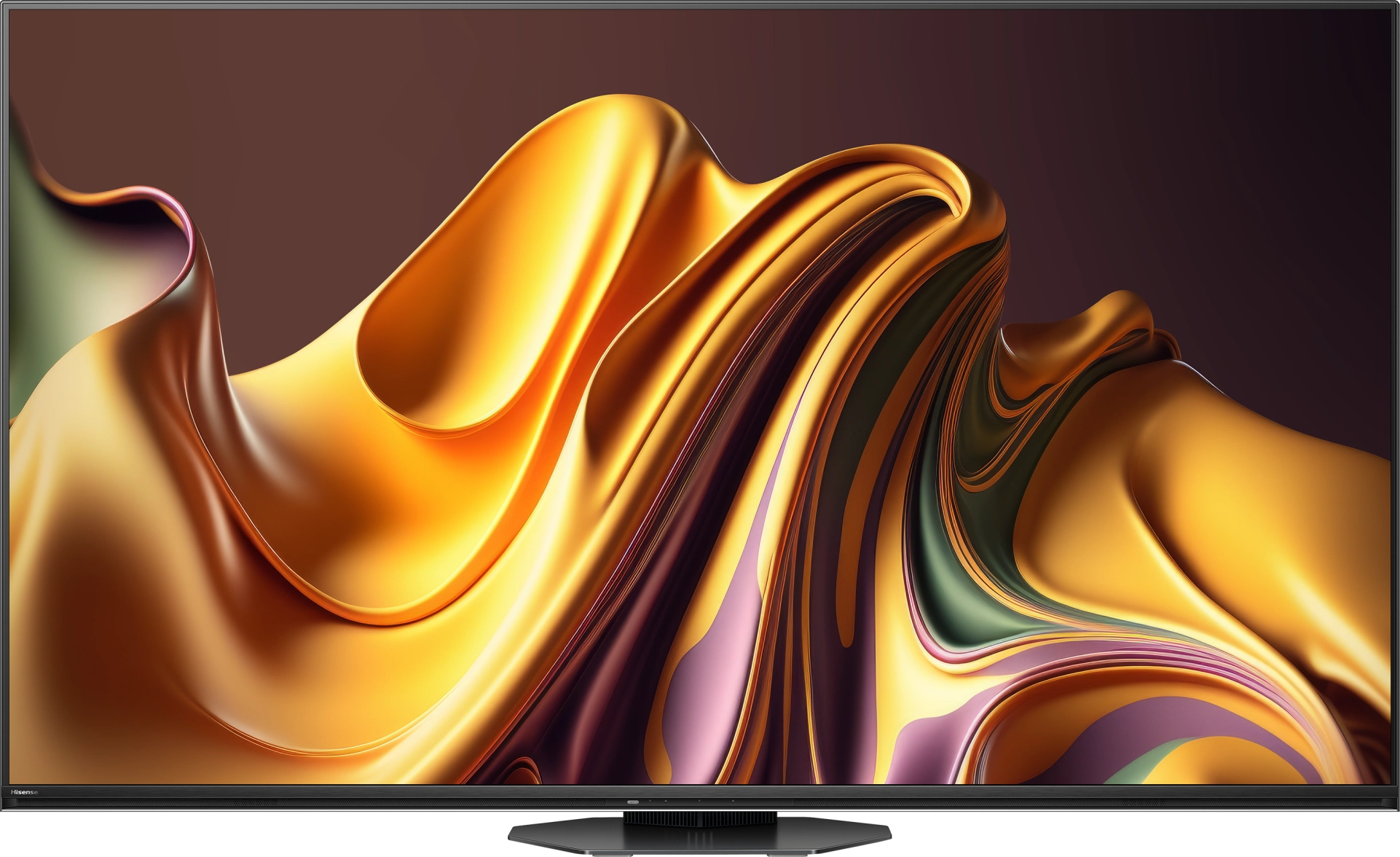
Panel type: LCD VA
Resolution: 3840x2160
System: Tizen
Model year: 2025
Complete the survey to find out the result

Panel type: LCD VA
Resolution: 3840x2160
System: VIDAA
Model year: 2025
Complete the survey to find out the result

Overall rating
7.0
8.0
Movies and series in UHD quality
6.8
7.8
Classic TV, YouTube
6.5
7.6
Sports broadcasts (TV and apps)
6.4
7.2
Gaming on console
8.4
8.6
TV as a computer monitor
8.2
8.4
Watching in bright light
6.3
8.2
Utility functions
7.2
9.4
Apps
8.7
7.7
Sound quality
6.0
7.8
Complete the survey to find out what fits your preferences
Advantages
Matte display excellently reduces reflections
Customisation options for the screen thanks to interchangeable frames + art mode
Free accessories in the form of a wall mount + OneConnect module
High native contrast
Decent brightness
High refresh rate - 120/144Hz
Many features for gamers - VRR, ALLM, Gamebar, proprietary motion smoother working in games
Great blacks and contrast
Incredibly high brightness
Full HDR format package: HDR10, HDR10+, Dolby Vision
Good motion fluidity - 165Hz panel
Outstanding usability in difficult lighting conditions (High brightness + New anti-reflective coating on the panel)
Many features for gamers, VRR, ALLM, HDMI 2.1, 288Hz for PC
All 3 ports in HDMI 2.1 standard (Finally!)
USB-C with video signal sending capability (Displayport)
Many features in the Vidaa system
Support for DTS and Dolby Atmos
Disadvantages
Missing HGiG mode – makes precise HDR adjustments on the console difficult.
No DTS support – requires additional hardware for some films on Blu-ray discs.
Paid picture mode
Missing some applications in the Vidaa operating system
At maximum volume, the television shakes slightly
The television tends to "overexpose" the image in 4K HDR materials.
Our verdict
The Hisense U8Q is a television that makes it hard not to feel that the manufacturer approached the topic with the ambition of a top student. The picture is strong, vibrant and contrasting – as if it were shouting: “look, I can do more than most in this price range!” And indeed, there is some truth to this. The secret lies in the large number of dimming zones in Mini-LED technology. Thanks to this, HDR does not just come down to promises in the brochure, but can actually impress – especially during evening viewings. It's also hard to complain about motion fluidity. Watching matches and fast-paced games is enjoyable, and although the ball may sometimes leave a slight trace, for 99% of viewers this will be a detail of little importance in everyday watching. Gamers also have reasons to be pleased here – although it's worth mentioning the lack of HGiG functionality right away. Aside from that, however, it is really good: low input lag, three HDMI 2.1 ports and a full set of gaming features make the U8Q one of the more interesting Mini-LEDs for console fans. Of course, there are no perfect products. The television still carries some “mini-LED” remnants, and the Vidaa system – although full of features – can be less intuitive and has a more modest selection of apps than competing platforms. But are these serious drawbacks or rather minor jabs in the context of the price and what we actually get? We leave the answer to that question to you!
TV appearance





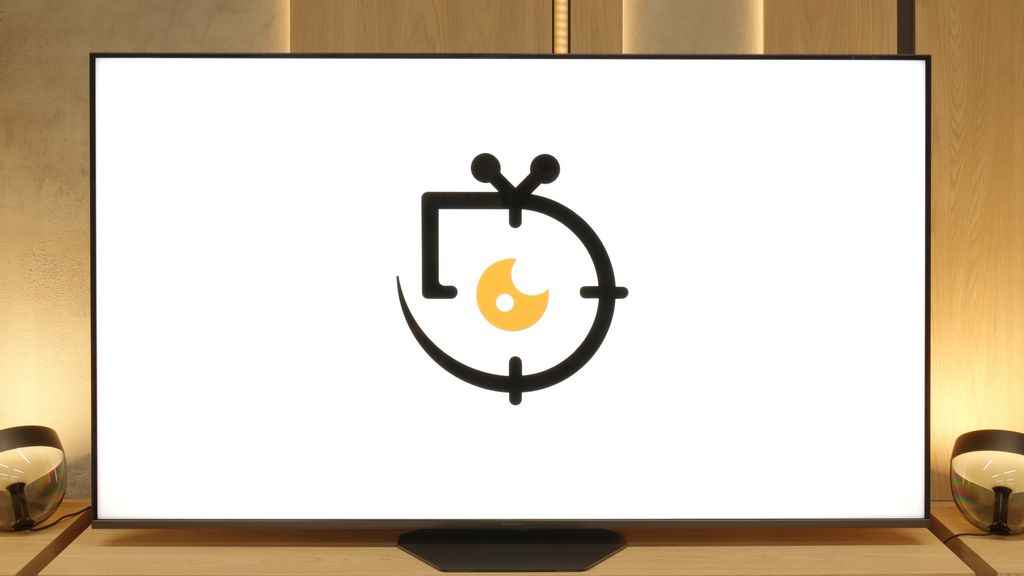
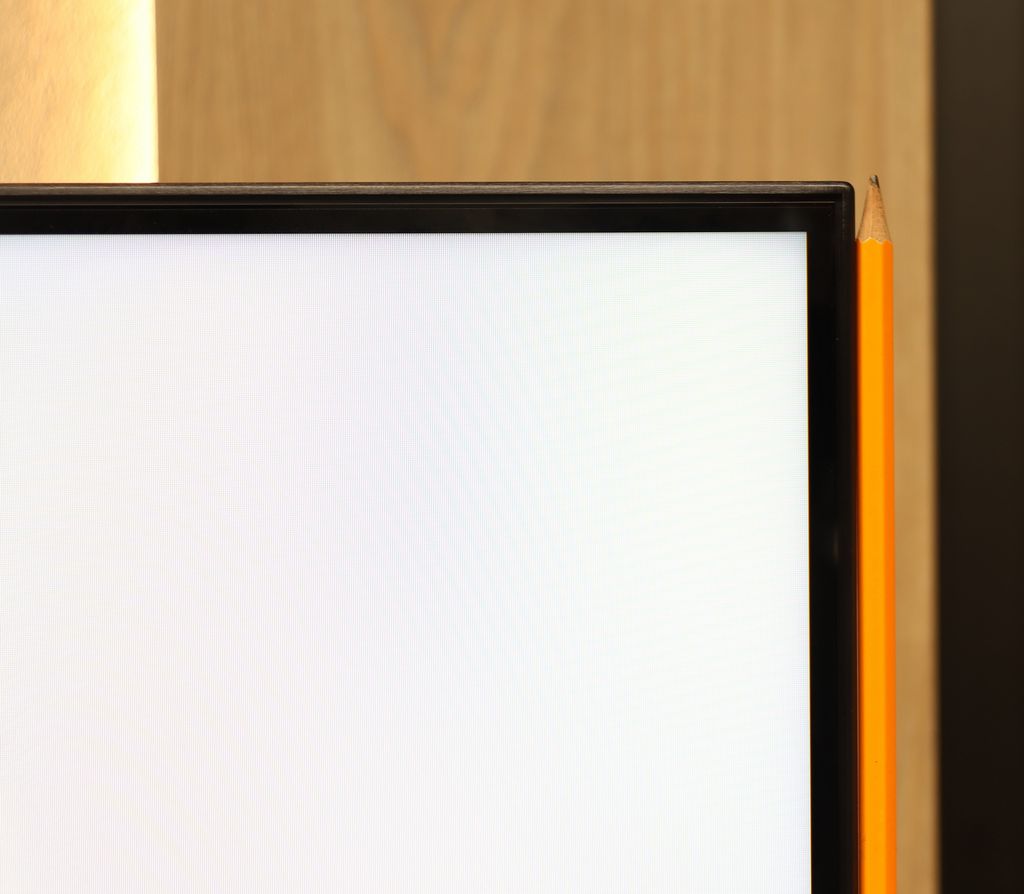
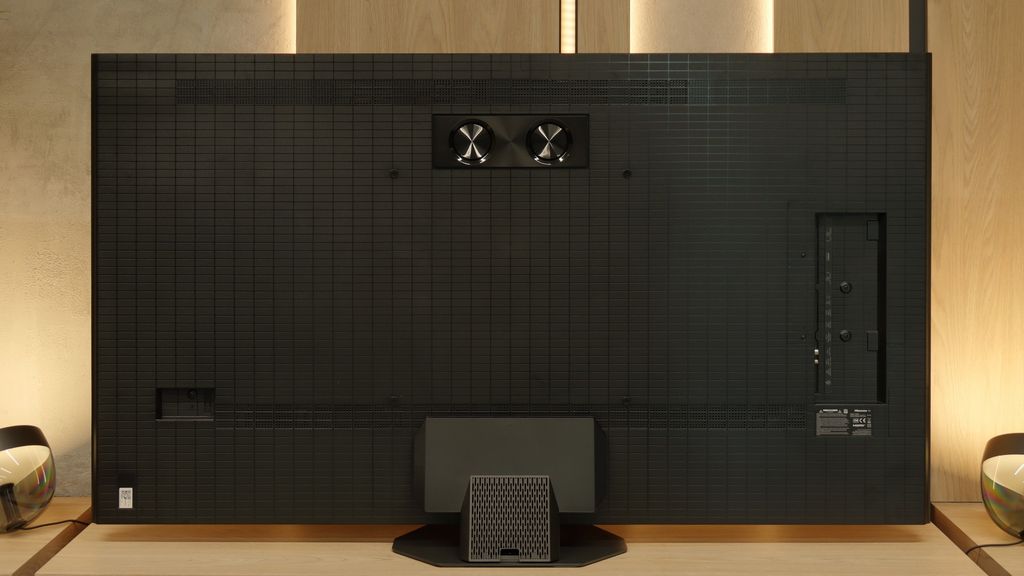
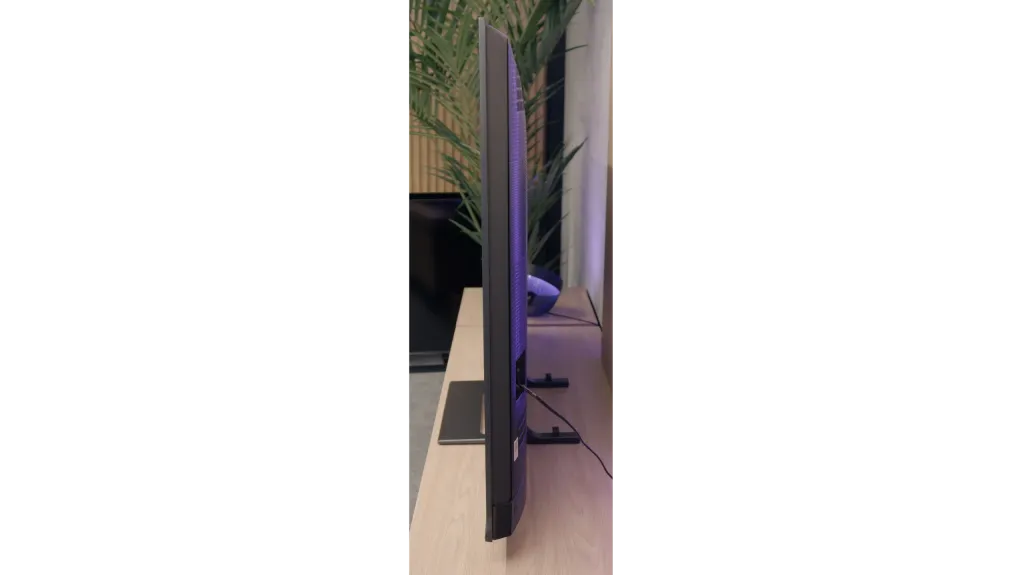
Contrast and black detail
6/10
8.6/10
Local dimming function: No
Local dimming function: Yes, number of zones: 2048 (32 x 64)
Contrast:

Result
4,800:1

Result
4,750:1

Result
14,900:1

Result
4,500:1

Result
4,300:1

Result
1,024,000:1

Result
140,000:1

Result
35,000:1

Result
22,350:1

Result
22,300:1
Halo effect and black detail visibility:

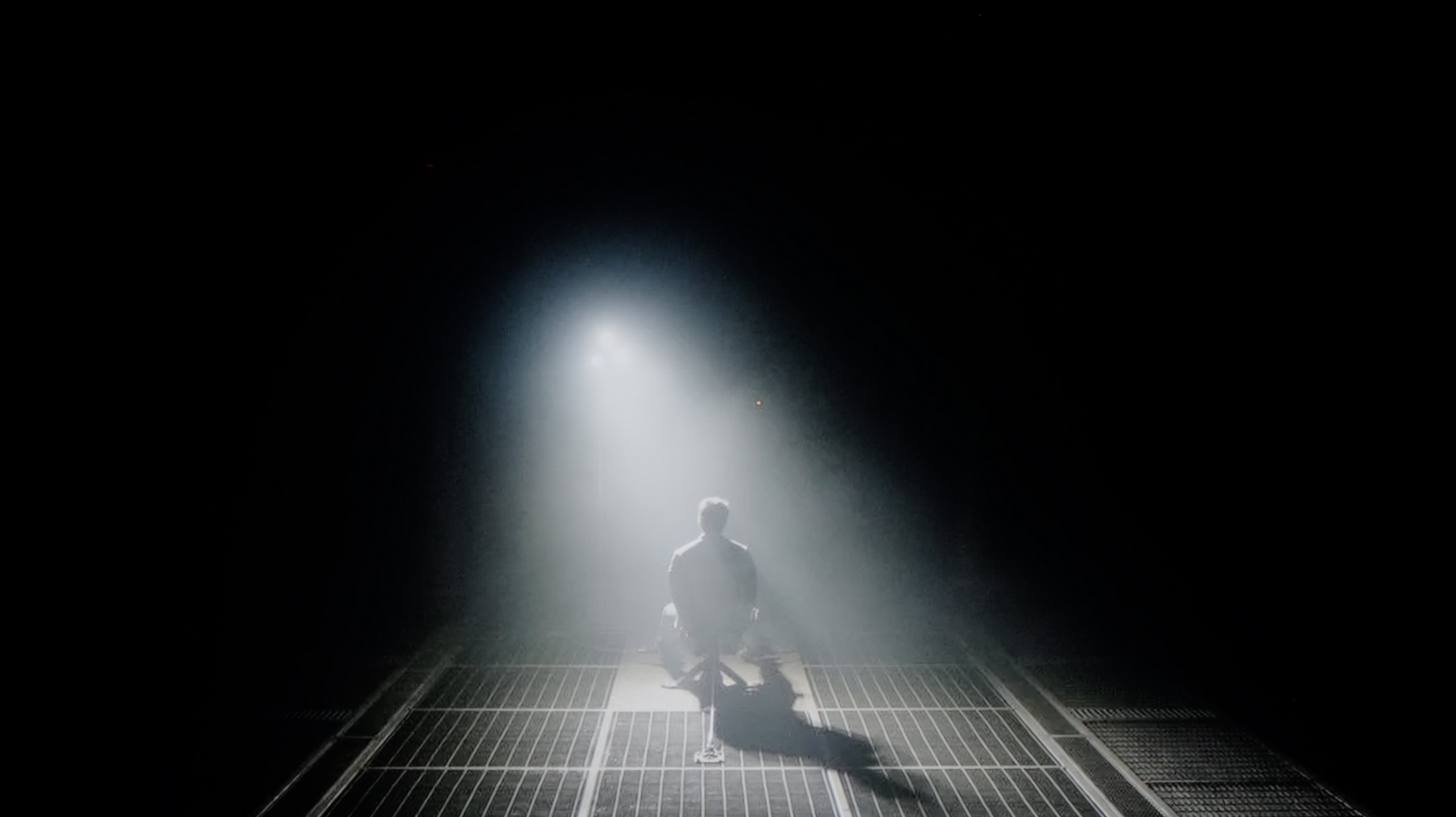
The year 2025 promises to be quite interesting when it comes to lifestyle televisions. Why? Because Samsung has prepared two versions of the iconic model The Frame – one standard and the other with the addition of “Pro”. In this review, we take a look at the version without “Pro”, which – as we shall see shortly – is quite significant. The standard model LS03F lacks any local dimming technology, unlike its more expensive sibling. This is important because it affects not only the overall picture quality but, primarily, how this television handles black levels.
The VA panel used in The Frame 2025 has a high native contrast – and this obviously works to its advantage. In the tested film scenes, details in the dark areas of the image were well visible, nothing blended together, and there was no formation of a uniform black/white blob. For the average viewer, this will be more than sufficient. But of course, not everything is perfect. The absence of local dimming means that the black levels on this television are not perfectly deep – they resemble dark navy rather than tar. Additionally, in our tested unit, we noticed slight blooming in the right part of the screen, but this could simply be the “quirk of the specimen” rather than a rule. Theoretically, one could try to improve the perception of black by backlighting the screen – for example, with an LED strip – but in the case of The Frame, this is rather impossible, as this television is meant to sit flush against the wall like a picture. So to achieve a better black visible to our eyes, we are forced to watch the LS03F with the lights on. That’s the charm of this technology.
The unit of Hisense U8Q that we tested, measuring 65 inches, is equipped with a VA panel, which in itself offers high native contrast. However, this is not the greatest strength of this model – the key lies in the Mini LED backlighting. Thanks to the use of thousands of dimming zones and a well-developed light management algorithm, the contrast in the U8Q can be described as excellent, especially for a TV of this technology.
The best results reach a level of around one million to one – a result that commands respect and places the U8Q among the top Mini LED televisions. Indeed, there are certain hiccups and even drops in contrast, but they are not as dramatic as in many other models of this class that we have tested on our portal. It should also be noted that like every Mini LED television, the U8Q is not entirely free from typical imperfections – sometimes the image may be dimmed too much or slight blooming with a halo effect may appear. However, this does not change the overall impression: the contrast in the Hisense U8Q is stunning and constitutes one of the greatest assets of this model.
HDR effect quality
6/10
7.6/10
Luminance measurements in HDR:

Result
642 nit

Result
589 nit

Result
574 nit

Result
584 nit

Result
631 nit

Result
2195 nit

Result
725 nit

Result
1652 nit

Result
485 nit

Result
1541 nit
Scene from the movie “Pan” (about 2800 nits)


Scene from the movie “Billy Lynn” (about 1100 nits)


Static HDR10


Dynamic: HDR10+
Dynamic: Dolby Vision


HDR luminance chart:
Hisense U8Q
HDR luminance
Samsung The Frame 2025 (LS03F)
HDR luminance
The Frame LS03F is a television that can surprise with its brightness. The maximum luminance reaches around 650 nits, which already looks impressive on paper. But as we know, laboratory tests are one thing, and real film scenes are quite another. When watching HDR materials in natural conditions, The Frame 2025 maintains very good results. In most film scenes, the peak brightness remained at around 550–650 nits. This is a sufficient value to feel the difference between standard picture quality and that of HDR – bright highlights, reflections on water, or moonlight are presented clearly and spectacularly.
It is also worth remembering that the LS03F is a QLED television, which translates into solid colour saturation. The coverage of the DCI-P3 colour space reaches about 92%, allowing for vibrant, intense colours in HDR content. This is not the level of top premium models, but for a lifestyle screen, the result truly deserves recognition.
When it comes to HDR, the Hisense U8Q shows its claws. On paper, that is, in synthetic measurement tests, the television can achieve nearly 4000 nits of peak brightness. This is a value that most models can only envy. In practice, this translates to very strong light effects in films – in some scenes, we managed to measure a real brightness of between 1500 and 2000 nits, which is a level typically reserved for the absolute top tier of televisions on the market.
Of course, it's not always perfect. In small, pinpoint elements, brightness can drop – a good example is scene number 4 from the film Sicario 2, where instead of thousands of nits, we get around 500. But it’s worth noting that the effect does not disappear completely – the light is still visible, and the image does not seem artificially dimmed. This is a typical issue with Mini LEDs, so it's difficult to consider this a major downside.
On the other hand, the colour reproduction is a huge plus. Thanks to additional coatings that enhance colour saturation, the U8Q nearly covers the entire DCI-P3 colour space (98%), and for the wider BT.2020 range, it achieved over 80%. This is an excellent result that makes HDR films look rich, vivid, and simply very cinematic.
Factory color reproduction
7.1/10
7/10


Factory Mode
After calibration


Factory Mode
After calibration
When it comes to image quality straight out of the box, even in Filmmaker mode, which is supposed to be the closest to reference, there were issues. We noticed clear deviations in white balance in both HD and 4K HDR content. The image was heavily skewed towards red and blue, giving the screen a characteristic pinkish tint. This effect was most noticeable in bright scenes – for example, in shots with a lot of white, where neutral light should naturally dominate. At such moments, the screen clearly took on pink tones, which is also visible in the attached comparison photo. As for the brightness characteristics – it wasn’t as bad as one might expect with such colour inaccuracies. The analysis of the gamma curve and EOTF showed a slight brightening of the image compared to the reference, but not enough to drastically ruin the viewing experience.
We must admit that when the U8Q arrived at our editorial office, we were slightly surprised… and positively so. Usually, in televisions, the white balance immediately requires adjustment – it can be too warm or too cold, which immediately leads to strange colour mistakes. Meanwhile, here the situation looks really good straight out of the box. Of course, we are talking about our unit, so there is no guarantee that every model will be equally well calibrated, but in our case, the first impressions were very positive. The only more apparent issue concerned the way the television manages brightness. Looking at the EOTF graph, it is clear that the U8Q tends to brighten small elements on the screen. This, in turn, caused what we mentioned earlier – slight overexposure and the impression that the entire scene can be a bit too bright. However, this is not a flaw that undermines the picture, rather an effect characteristic of this model.
Color reproduction after calibration
8/10
8/10




After calibration, the movie mode has gained a completely new quality. The issue of the pink tint, which had been clearly visible before, especially in bright scenes, has been effectively eliminated. Colours now look much more natural, and the white balance no longer dominates the rest of the image. It is no longer the same exaggerated "box picture" – everything now has coherence and a cinematic character. Additionally, the tendency of the television to slightly brighten scenes, previously visible in the EOTF curve analysis, has been partially corrected. Of course, this is within the limits of what the design allows without local dimming – one cannot speak of perfect brightness management here. Nevertheless, the final effect was definitely closer to what one might expect from a mode called Filmmaker.
Of course, we wouldn’t be ourselves if we didn’t make adjustments to the white balance. After calibration, we managed to equalise the SDR signal to practically perfection – older films, YouTube content, and classic television looked almost ideal on the U8Q. This is truly an exceptional level that shows this model can do a lot if given a bit of help. Unfortunately, the situation is different with HDR content. The colours themselves don’t pose many problems, but the U8Q’s biggest issue remains the EOTF brightness characteristics. In practice, the television tends to “over-expose” beyond how the image should look in its original form. It’s that slight "bleeding" that we noticed earlier in comparisons with the best screens on the market. It’s a bit of a shame that this characteristic can’t be fully tamed – if we could maintain equally good control over brightness in HDR as in SDR, we would be dealing with an absolutely reference-quality image.
Smoothness of tonal transitions
9/10
8.9/10












In terms of the smoothness of tonal transitions, the LS03F maintains a high standard – just like last year’s models. The television did not encounter any issues when testing more challenging film scenes, where noticeable transitions between shades of colour can easily occur. The colour gradation is very good here – both in the lighter and darker areas of the image. We did not observe the typical banding effect or other disturbances that could be distracting while watching films. If we were to nitpick, in the most demanding scenes – with subtle transitions and delicate gradients – minor imperfections can be detected. But only if one approaches the screen very closely and begins to analyse the image from a distance not intended by the manufacturer.
When it comes to the fluidity of tonal transitions, the Hisense U8Q made a really great impression on us. Even in the darkest scenes, where unsightly bands and ugly transitions usually appear on other televisions, here the image remains smooth and cohesive. Nothing layers, there is no "stair-step" effect – everything looks as it should. Similarly, in brighter shots – it is also very good. Sure, if we looked through a magnifying glass, we would probably find some minor flaw, but during normal viewing, it's hard to complain about anything. Overall, it performs very, very well!
Image scaling and smoothness of tonal transitions
6.7/10
8/10
Smooth transition function

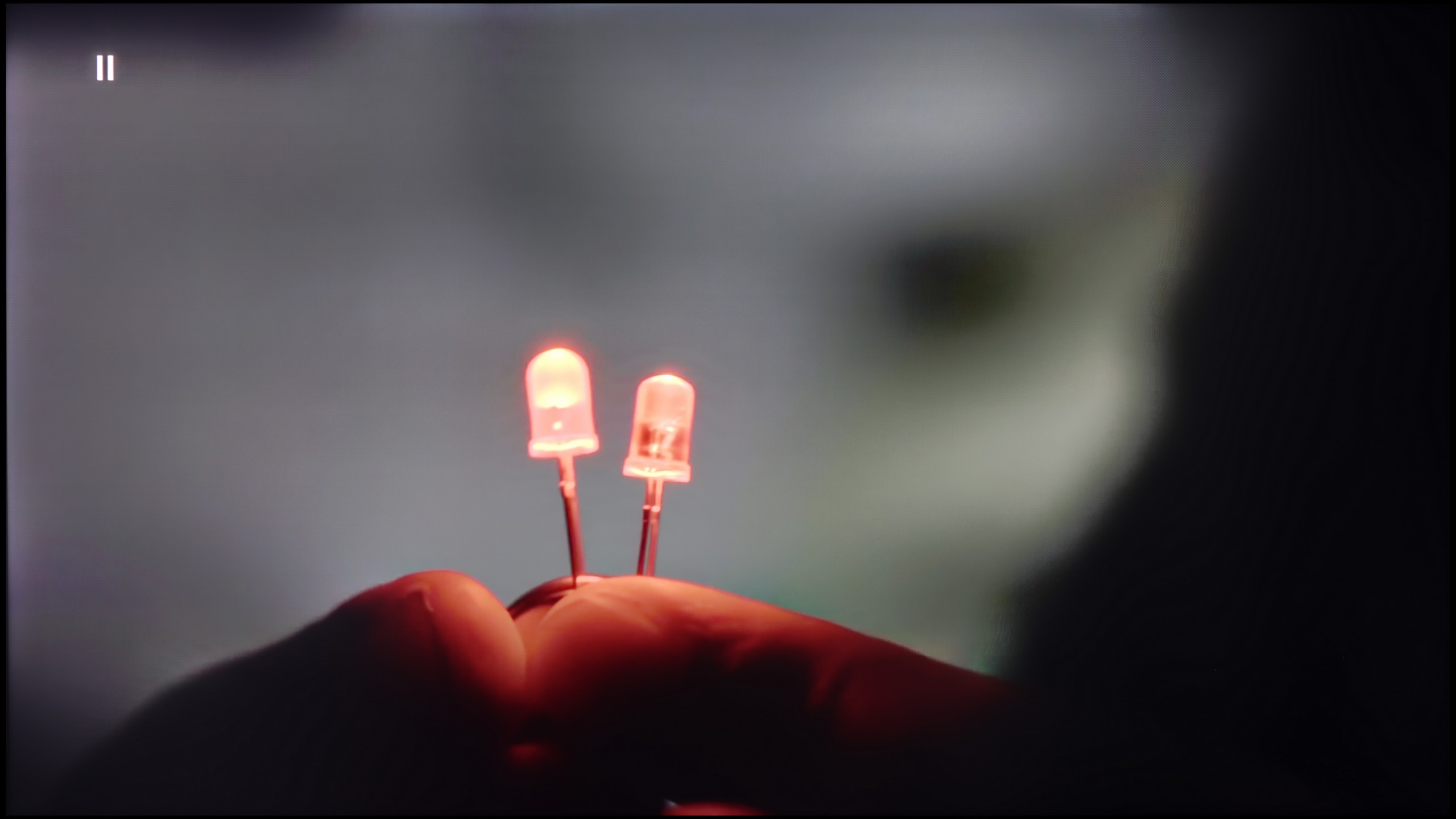
Image without overscan on the SD signal


LS03F has been equipped with the NQ4 processor, which is responsible for improving image quality – particularly in lower quality materials. In practice, this works surprisingly well, especially when it comes to older content and recordings with lower resolution. Activating the "noise reduction" function yields noticeable effects. The TV effectively smooths tonal transitions and removes digital noise that can appear in darker areas of the image. Compared to previous generations, there is a clear advancement – previously, this function often smoothed everything too much, including details that it shouldn't remove. In this year's model, smoothing still occurs, but in a much more acceptable manner. Textures of materials, skin, and fabric details are no longer subdued as strongly as before – the image retains more naturalness. However, this does not change the fact that film grain is still removed by the TV, which may not appeal to everyone. On the other hand, it is no longer as aggressive an intervention as in previous models. It is also worth mentioning that the LS03F may struggle with very weak signals – for example, from VHS tape recordings or low-resolution video. In such cases, we noticed slight clipping of the image at the edges – so-called overscan. This can lead to a situation where a small part of the image (e.g., subtitles at the bottom edge) gets cut off.
Hisense U8Q handles lower quality materials quite well. The television can smooth out tonal transitions thanks to the "Smooth and Gradient Picture" feature – it works best when set to Medium. At this setting, it nicely dims unwanted bands and unevenness in the picture, but importantly, it does not remove the film grain or fine details.
The upscaling itself is also at a good level. Images from lower resolutions appear smooth and soft, sometimes even overly so – we get a plastic effect that may not appeal to everyone. Fortunately, this can be easily corrected with the sharpness slider, allowing the picture to be adjusted to personal preferences.
Blur and motion smoothness
6.9/10
7.8/10

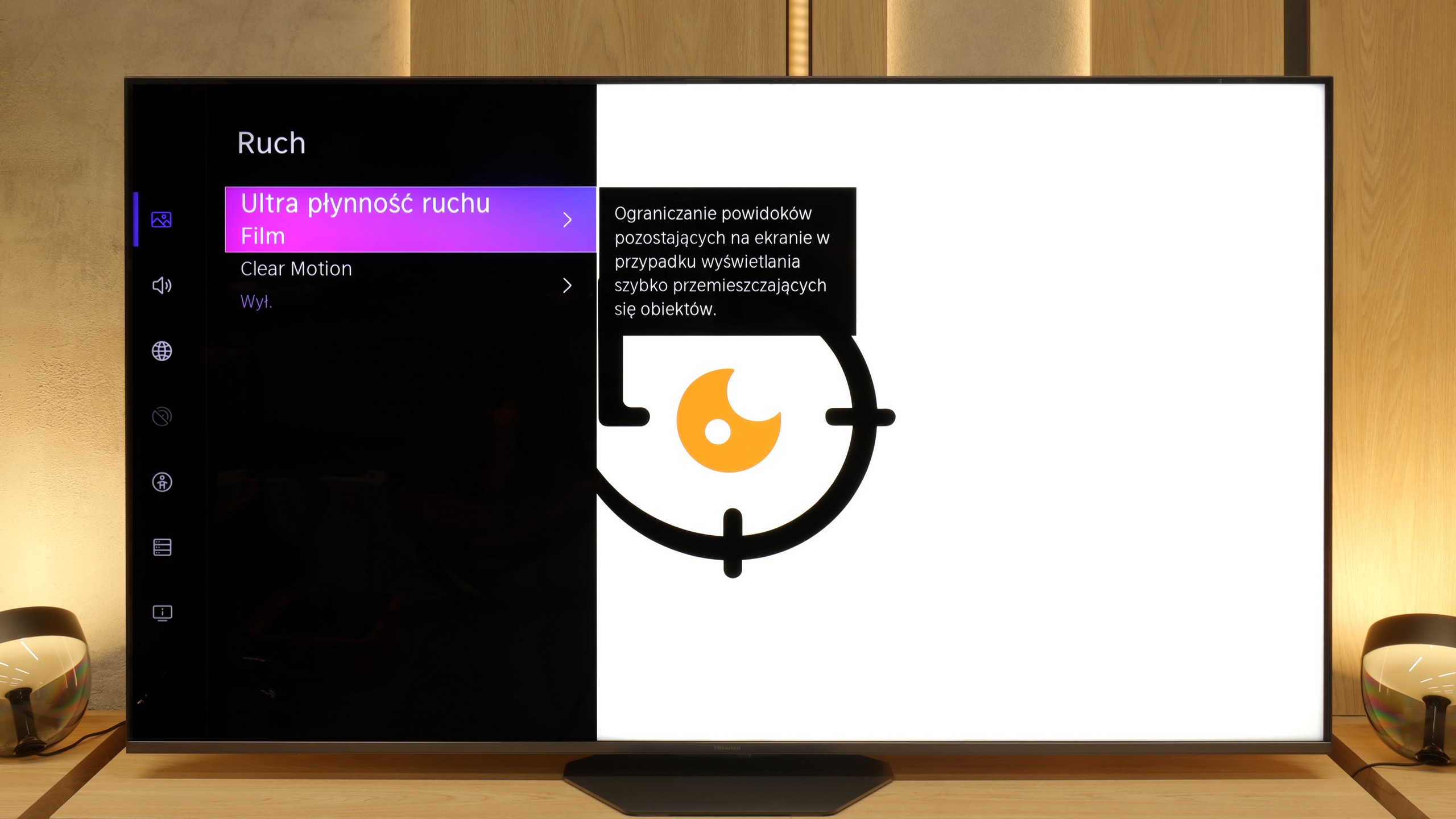
Blur (native resolution, maximum refresh rate):



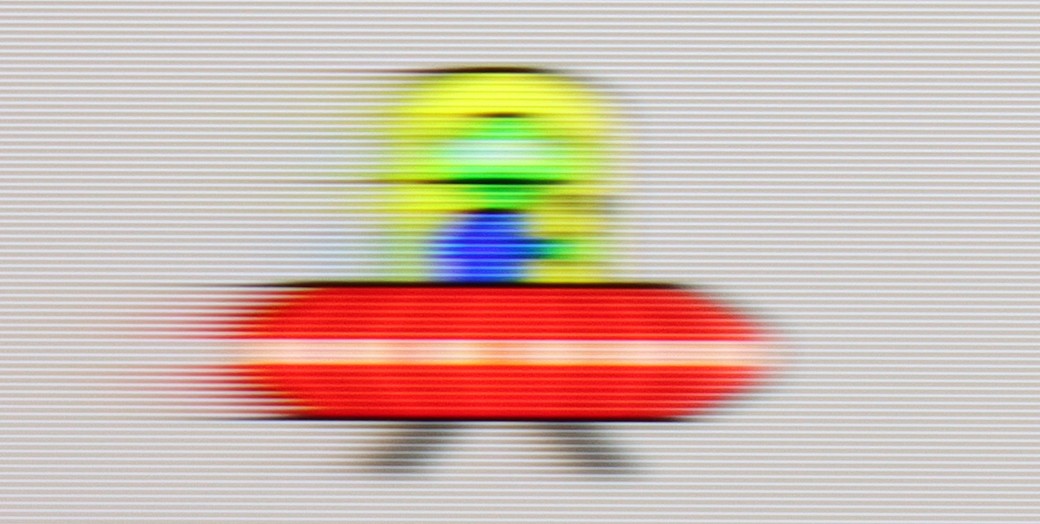
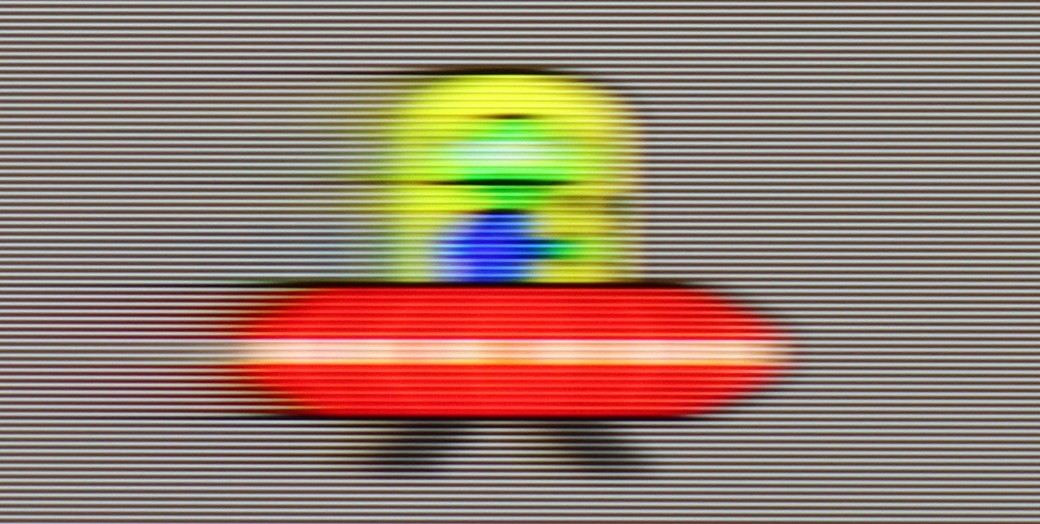
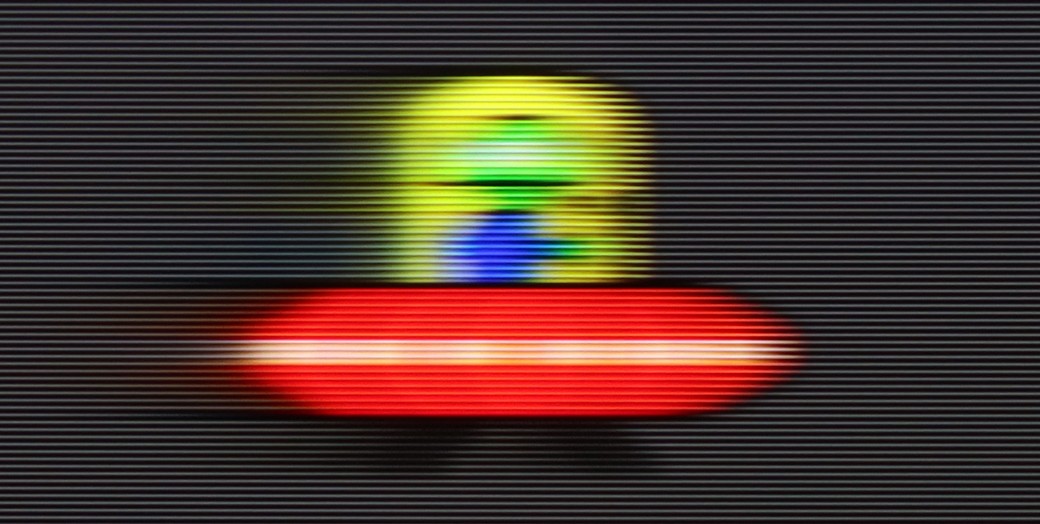
Blur (BFI function enabled):
Image flickers in this mode






Smużenie ():
Smużenie (1080p@288Hz):

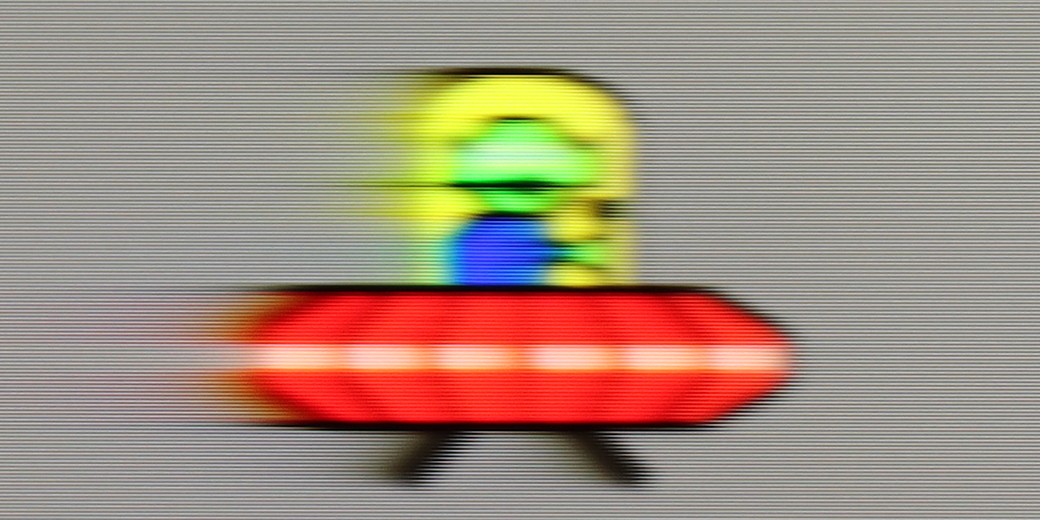

The new feature in The Frame for 2025 is a display with a refresh rate of 144 Hz. Yes – in a television that is mainly associated with displaying works of art, you can now not only watch Van Gogh but also comfortably play on a console or follow dynamic sports events. This is a definite step towards greater versatility. In the case of Samsung films, as usual in models with a display rate of 120 Hz and above, it allows you to adjust motion smoothness according to your preferences. You can set a more cinematic reproduction while maintaining frame rate or opt for full motion smoothing. The range of options is broad, allowing you to tailor the effect to your own taste – whether the viewing experience is meant to resemble classic cinema or a show on a modern theatre screen.
*this part of the test refers to the LS03FAU model in sizes 55 and 65 inches, which is equipped with a 144Hz panel, while sizes 43 and 50 inches have 60Hz displays, and thus perform much worse in terms of motion smoothness.
Hisense U8Q features a panel that can refresh the image up to 165 Hz in 4K resolution. In practice, this will primarily be utilised by PC gamers, but as the saying goes – it’s better to have it than not 😊. For films and series, we have a built-in smoothness enhancer called Ultra Motion Smoothness. In the settings, it can be easily adjusted to suit personal preferences – whether we want a more “cinematic” frame rate or a smooth, theatrical spectacle.
Console compatibility and gaming features
8.2/10
8.5/10
- ALLM
- VRR
- VRR range48 - 144Hz48 - 288Hz
- Dolby Vision Game Mode
- Correct implementation of HGIG
- 1080p@120Hz
- 1440p@120Hz
- 4K@120Hz
- Game bar

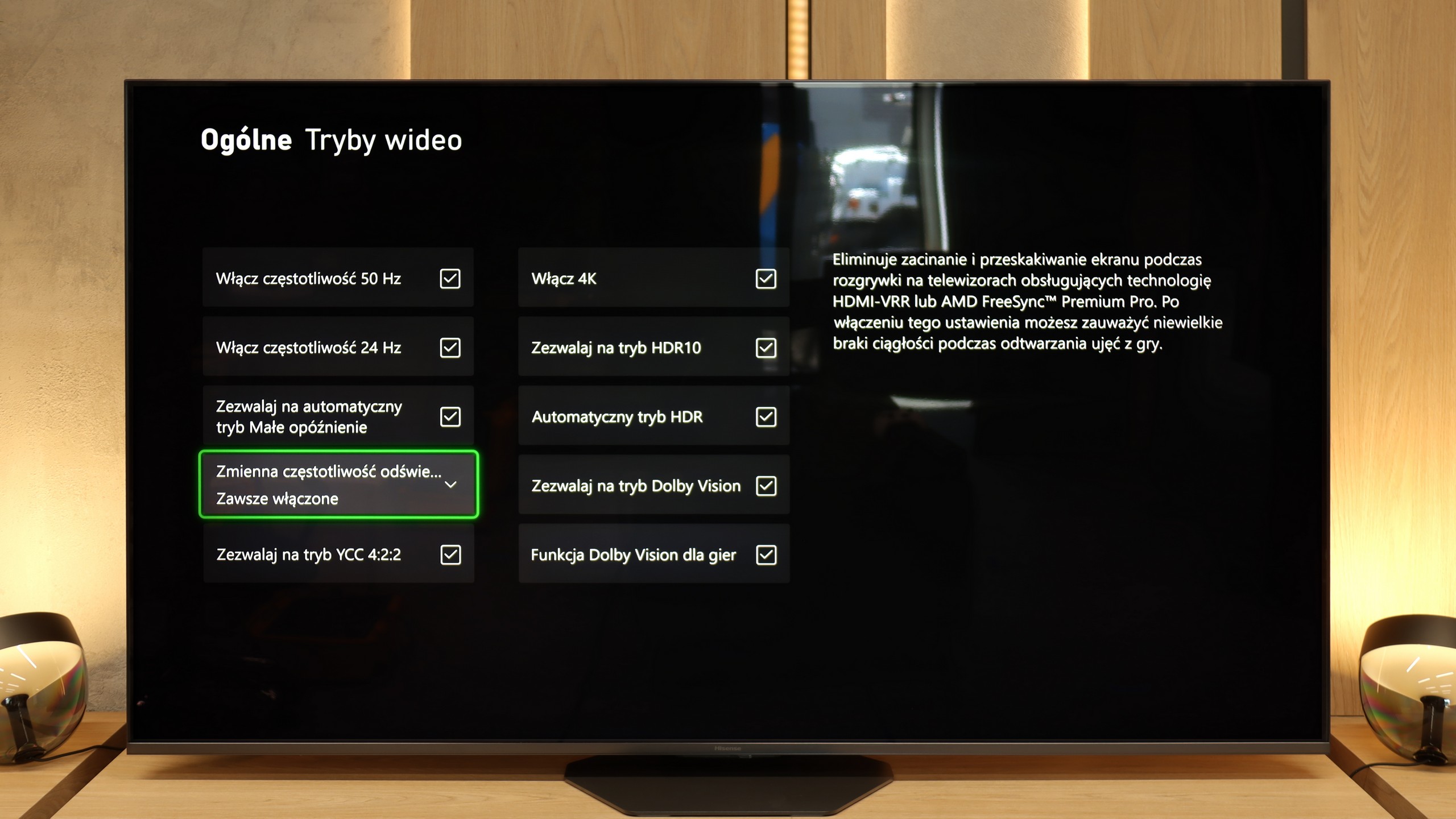

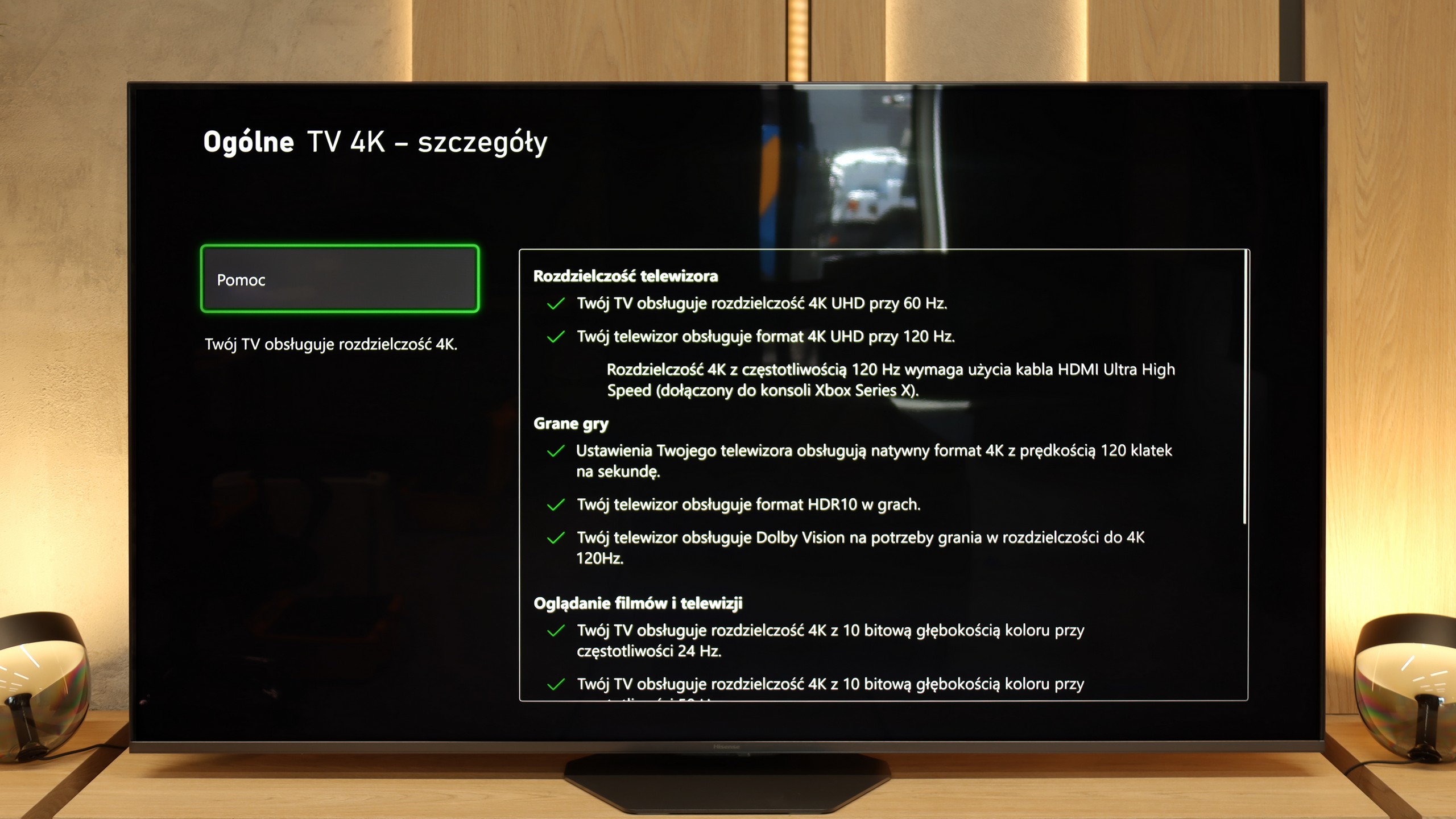

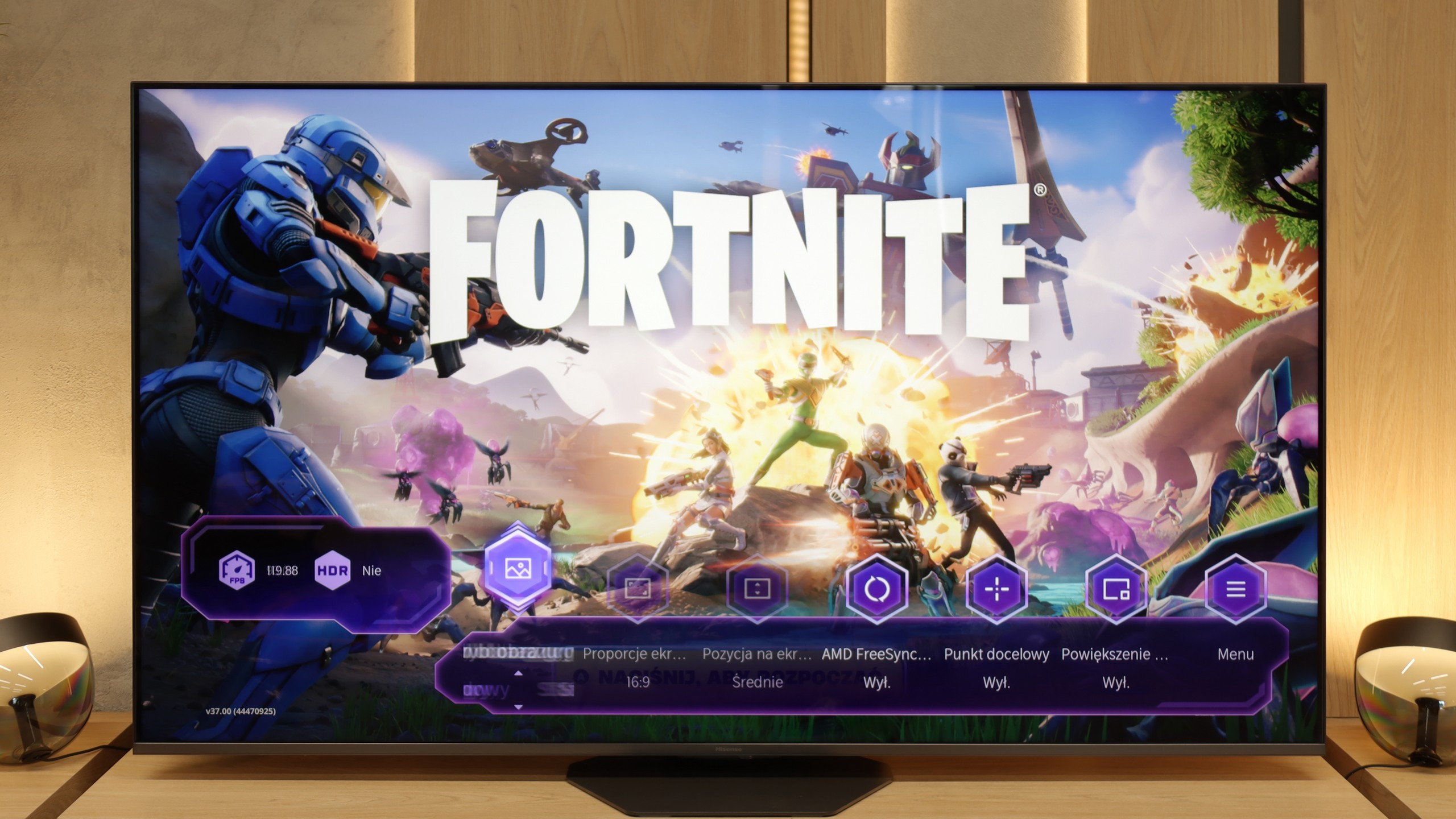

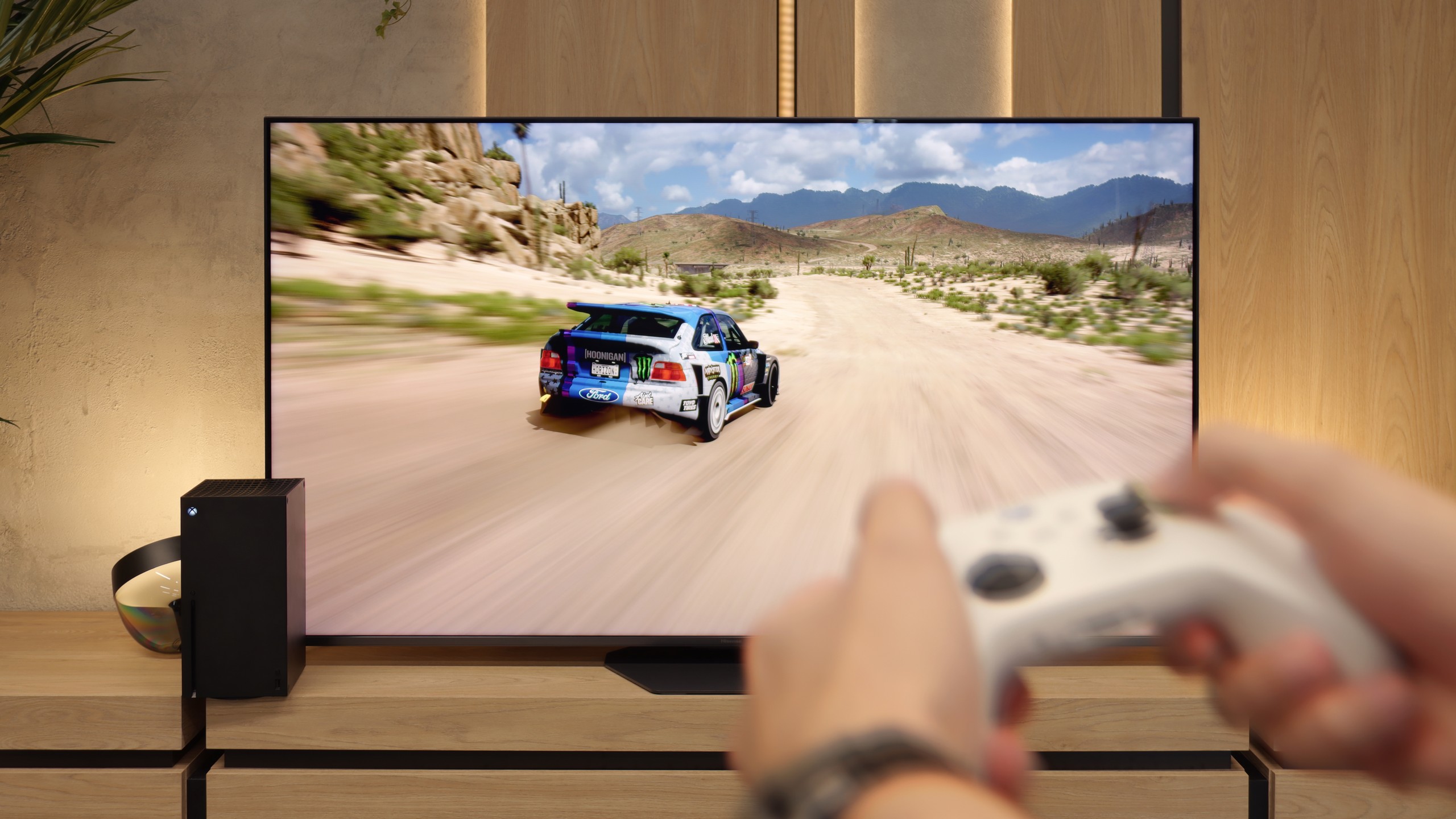
As we mentioned earlier – although The Frame is likely to display images and works of art most of the time, Samsung recognised that a Van Gogh enthusiast could just as easily be an avid gamer. And it must be admitted that The Frame 2025 has almost everything needed to become a full-fledged gaming television.
On board, we find support for ALLM (Automatic Low Latency Mode) and Variable Refresh Rate (VRR) thanks to the implementation of one HDMI 2.1 port. The television handles lower resolutions at higher refresh rates effortlessly and features an advanced Game Bar – already known from other Samsung models – which allows for a quick preview and change of the most important gaming-related settings. For this, it earns extra points from us. The proprietary motion smoother Auto Motion Plus Game is also worth mentioning, which – it is worth emphasising – operates without increasing input lag. Samsung remains the only manufacturer that has managed to implement this feature in a practically invisible manner in terms of delays. The effect? Much better fluidity in games, especially those that struggle to maintain a stable 60 frames per second. This solution can realistically improve the gaming experience in more demanding titles – particularly on consoles, which do not always manage full fluidity, especially in AAA games.
As for the downsides – the lack of Dolby Vision is already considered standard in Samsung televisions, so there is not much to particularly criticise here. However, there is a different issue entirely. In the latest version of the Tizen system, the HGiG option has disappeared. Literally – it is not there. This is a significant hindrance when configuring the console for proper HDR content display in games. It is hard to understand why such a decision was made, but one thing is certain – this should be fixed as soon as possible. We are talking about a brand that has set standards for gaming on televisions for years. If HGiG returns – and we hope it will – The Frame LS03F can confidently aspire to be called a genuine gaming television. Not just as a decoration on the wall, but as equipment that truly provides joy in gaming.
In terms of features, the Hisense U8Q has practically everything one could expect from a modern gaming television. Thanks to the new processor, the manufacturer managed to implement as many as three HDMI 2.1 ports, so there is no problem connecting several consoles or a computer. On top of that, it includes all the key technologies – Game Bar with parameter preview, variable refresh rate (VRR), automatic low latency mode (ALLM)… in a word, a complete set.
But as is often the case with Hisense, it fell a bit short of perfection. The biggest drawback remains the lack of support for the HGiG format, which allows the brightness of the television to be adjusted to the console and maximises HDR in games. It’s a shame, because if this element were included, we would have a device practically made for gamers. As it stands, the U8Q remains “only” a very good choice 😉
Input lag
10/10
9.8/10
SDR
HDR
Dolby Vision
In terms of input lag, Samsung maintains a high level – and a very high one at that. The LS03F, like most of this year's models from the brand, achieves a score of 8 ms for 4K content, which is practically a reference value. This result allows for gaming even in the most dynamic titles without delays and with full responsiveness. Well done!
The Hisense U8Q really handles signal delay well. In 120 Hz mode, the input lag is around 10 ms, while with 60 Hz content it hovers around 18 ms. These are values that place it among the fast televisions, and in practice, it is difficult to have any significant complaints about them. The response is instantaneous; controlling a character or a car on the screen happens without perceptible delays. Whether someone is playing fast-paced shooters or calmer narrative titles, the U8Q performs excellently.
Compatibility with PC
8.2/10
8.4/10

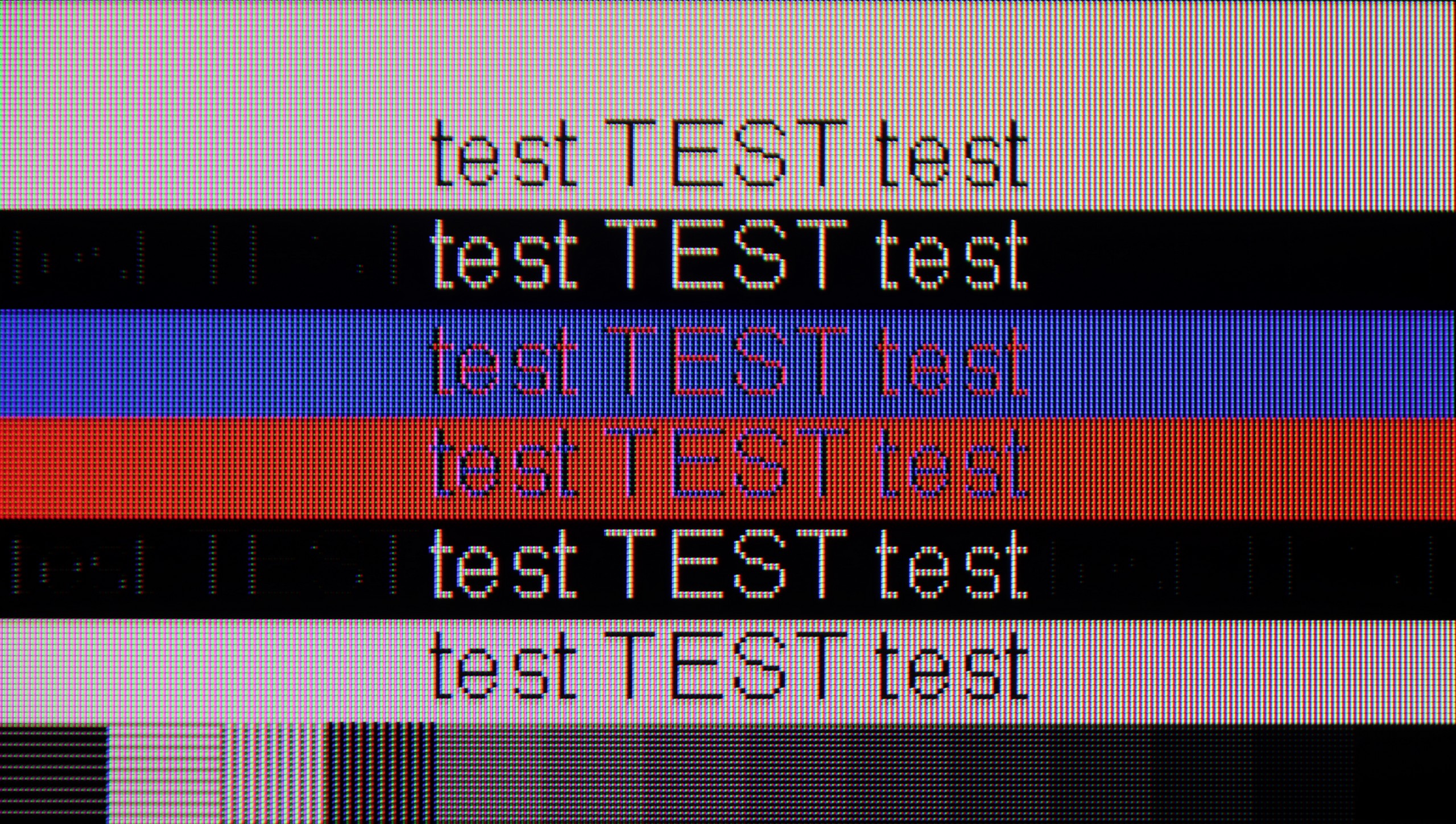
The collaboration of The Frame 2025 with a computer is not a significant problem. Let's start with gaming, as this is where this model demonstrates its strengths – support for 144 Hz signal, low input lag, and compatibility with G-Sync technology (for NVIDIA cards) make it hard not to regard it as a fully-fledged gaming monitor. It is one of the more interesting "PC gaming" televisions available on the market in this category.
When it comes to everyday work, the situation looks equally good. The Frame handles chroma 4:4:4 without any issues, resulting in good font readability and overall user comfort. We only noticed minor problems with dimming very thin lines and dark details on a light background – this effect may occur especially when working with small interface elements. However, in practice, with a 55-inch diagonal screen and standard office working distance, it will be difficult to realistically notice this problem. Nonetheless, it is worth keeping this in mind if the television is to serve as a monitor not only for entertainment but also for precise work with graphics or text.
As we mentioned regarding the features for gamers – Hisense U8Q also communicates well with computers. The 4K panel with a refresh rate of 165 Hz is impressive on its own, and at Full HD resolution, it can even boost to 288 Hz. This is great news for e-sports fans, where speed of reaction matters most, rather than the highest image quality. Additionally, it supports G-Sync and FreeSync, so gameplay is smooth, without stutters and annoying frame tearing.
A pleasant surprise is the presence of a USB-C port with DisplayPort functionality for laptops or even phones. This is a true novelty in televisions, and it's quite possible that Hisense will be a pioneer here, setting the direction for the competition.
When it comes to working with text, we must mention one small inconvenience. Although the U8Q correctly handles chroma 4:4:4, it has issues displaying very thin, horizontal fonts. This means that some subtitles or interface elements may be hard to read. Probably no one buys this model with office work in mind, but if someone were to have such a plan – it’s worth keeping this in mind.
Viewing angles
3.5/10
3.2/10
As could be expected from a VA panel, the viewing angles on The Frame 2025 are at best mediocre. The image loses saturation and contrast when moved off-axis. It's a pity because we are talking about a model that displays digital artworks in standby mode – and it is precisely in such moments that wide viewing angles would make the most sense, enhancing the experience of engaging with a real image rather than just its screen imitation.
Perhaps in the future, manufacturers will decide to introduce special coatings or modified versions of VA panels that improve this aspect – because for lifestyle televisions, it would have real significance not only in terms of functionality but also aesthetics.
In terms of viewing angles, the Hisense U8Q performs averagely – typical for a VA panel. It's a classic compromise: in exchange for much better blacks and contrast than in IPS panels, we must accept that watching from a wider angle does not look as good. Colours begin to lose intensity, and the picture slightly brightens. For a viewer sitting directly in front of the television – it’s a dream. For someone who sits more to the side – it’s a bit less so.
TV efficiency during daytime
6.3/10
8.2/10

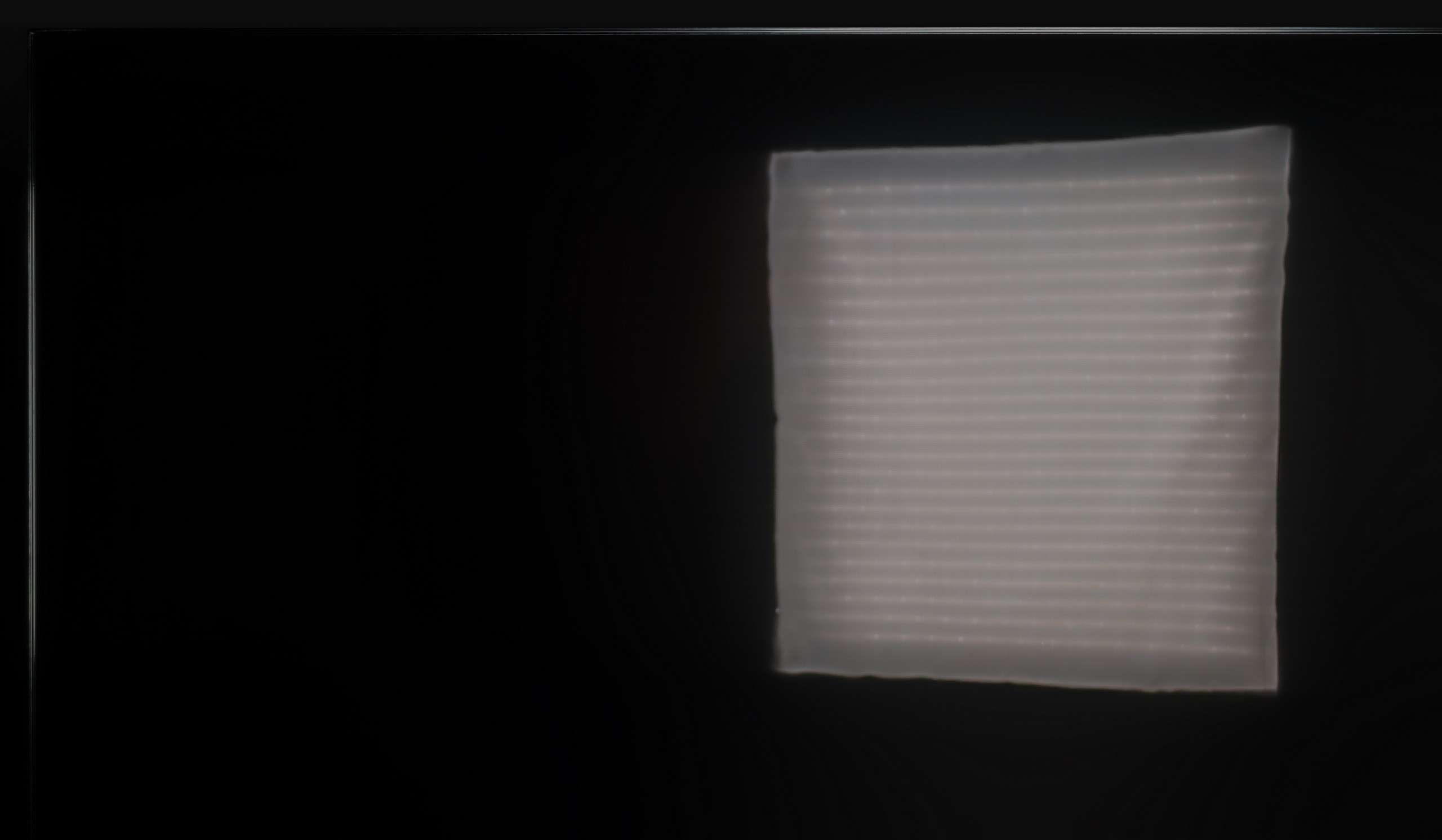


Matrix brightness
Average luminance SDR
Hisense U8Q: 914 cd/m2
Samsung The Frame 2025 (LS03F): 596 cd/m2
One of the most characteristic elements of The Frame is its matte display – and it must be said that Samsung has really refined this aspect. From our experience, it is one of the best solutions for suppressing light reflections, especially direct ones. If screen reflections can be irritating, it will be difficult to find a better display in this budget than the matte panel used in Samsung TVs. Of course, this comes with a certain compromise. In very bright sunlight, colours may appear slightly washed out, and the image loses a bit of depth. However, it is something we consciously accept when choosing a matte screen – something for something. In practice, the colours and contrast on Samsung's matte screen are still better than on Chinese designs such as the TCL NXT Vision or Hisense Canvas TV. If effective suppression of reflections and the desire to use the television also as a "digital picture" in bright rooms is a priority, then there is hardly a better choice.
The Frame achieves around 600 nits of brightness, which combined with the matte finish allows the television to perform well in brightly lit daytime conditions. It may not be at the level of flagship models, but in everyday use – in a living room with plenty of light – it handles it without any problems.
Hisense has opted for a new anti-reflective coating called Anti-Reflection PRO. It aims to enhance viewing comfort in challenging lighting conditions – and it indeed does the job. Reflections do not disappear entirely, but they are well controlled and do not interfere with daily viewing. However, the highlight is the brightness in SDR – around 1000 nits! This is a result that would make even the top super premium models proud. As a result, the U8Q performs excellently in sunlit rooms and can confidently be considered one of the best televisions for daytime viewing.
Details about the matrix
Subpixel Structure:

Panel uniformity and thermal imaging:

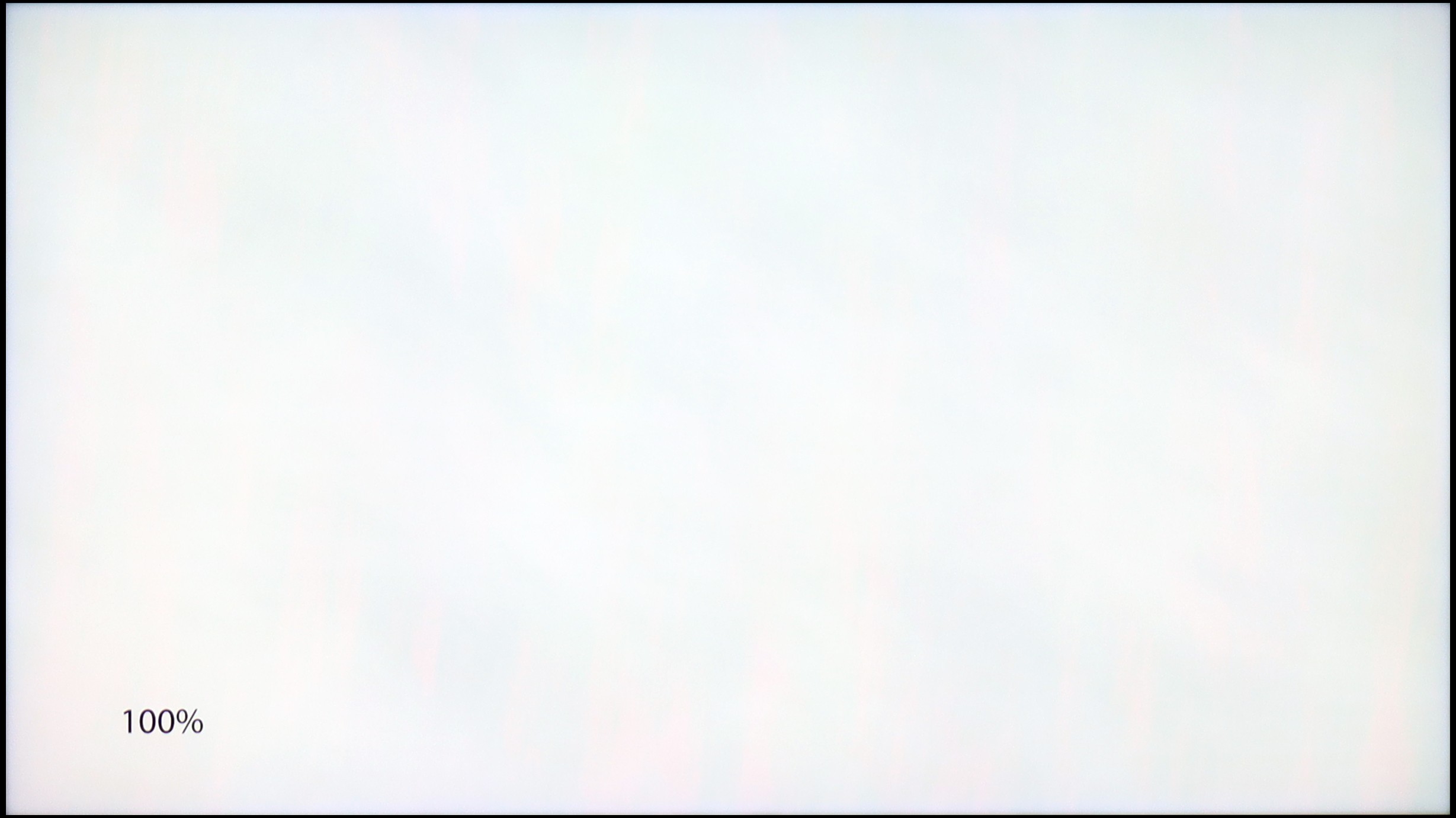
Samsung The Frame 2025 (LS03F)
Hisense U8Q
TV features
7.2/10
9.4/10
- HDMI inputs3 x HDMI 2.0, 1 x HDMI 2.1 40Gbps0 x HDMI 2.0, 3 x HDMI 2.1 48Gbps
- Other inputsToslink (Optical audio), RCA (Chinch)
- OutputsToslink (Optical audio), eARC (HDMI), ARC (HDMI)eARC (HDMI), ARC (HDMI), Mini-Jack (Headphones)
- Network InterfacesWi-Fi 2.4GHz, Wi-Fi 5GHzWi-Fi 2.4GHz, Wi-Fi 5GHz, Ethernet (LAN) 100Mbps
- TV receptionDVB-T, DVB-T2, DVB-S, DVB-S2, DVB-CDVB-T, DVB-T2, DVB-S, DVB-S2, DVB-C
Classic features:
- Recording to USB (terrestrial TV)
- Recording programming
- Picture in Picture (PiP)
- RF remote control (no need to aim at the screen)
- Backlit remote control
- Teletext
- Audio only mode
- Bluetooth headphones support
- Simultaneous Bluetooth headphones & TV audio
Smart features:
- AirPlay
- Screen mirroring (Windows Miracast)
- Voice search
- Voice search in native language
- Ability to connect a keyboard and mouse



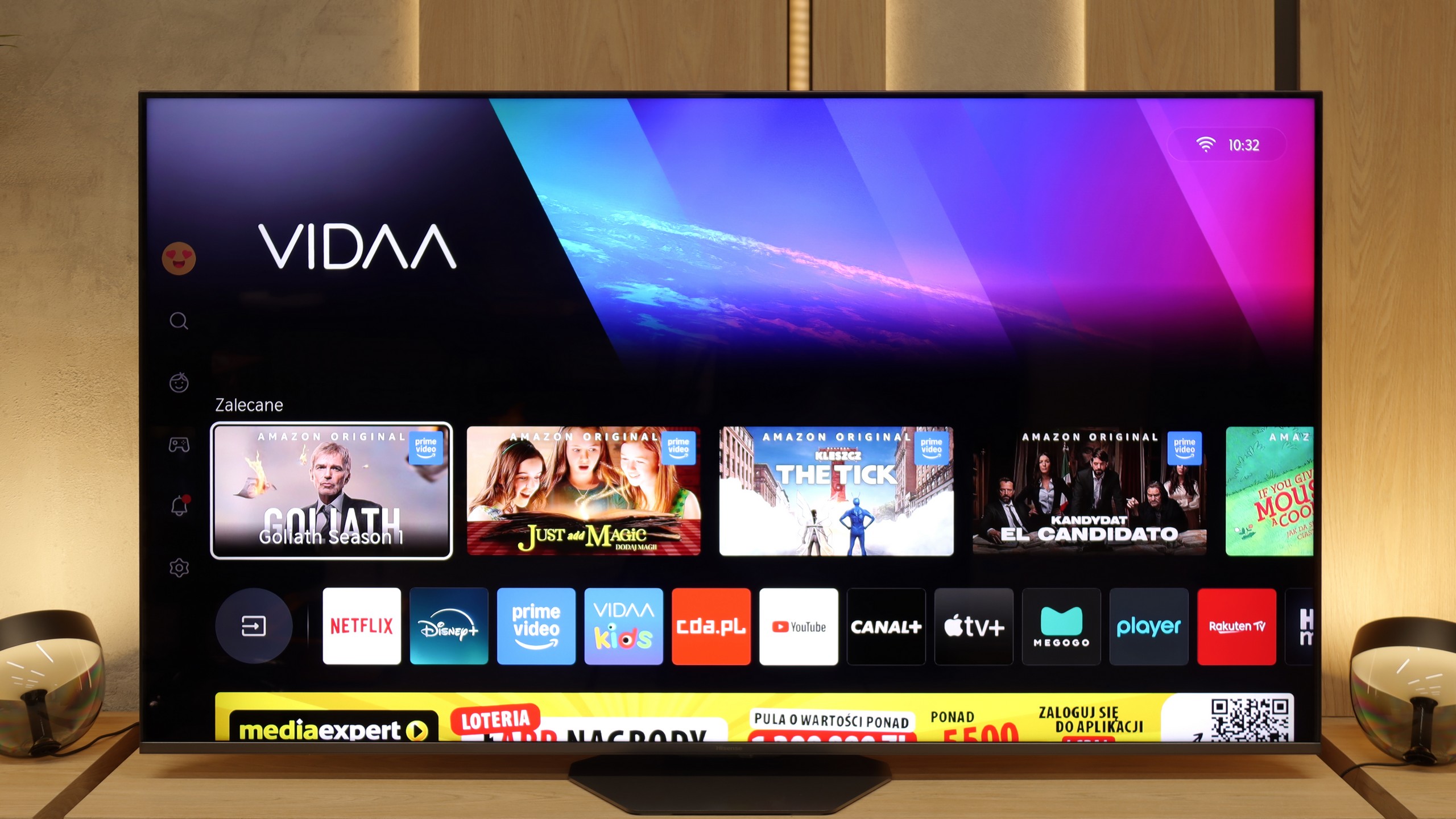
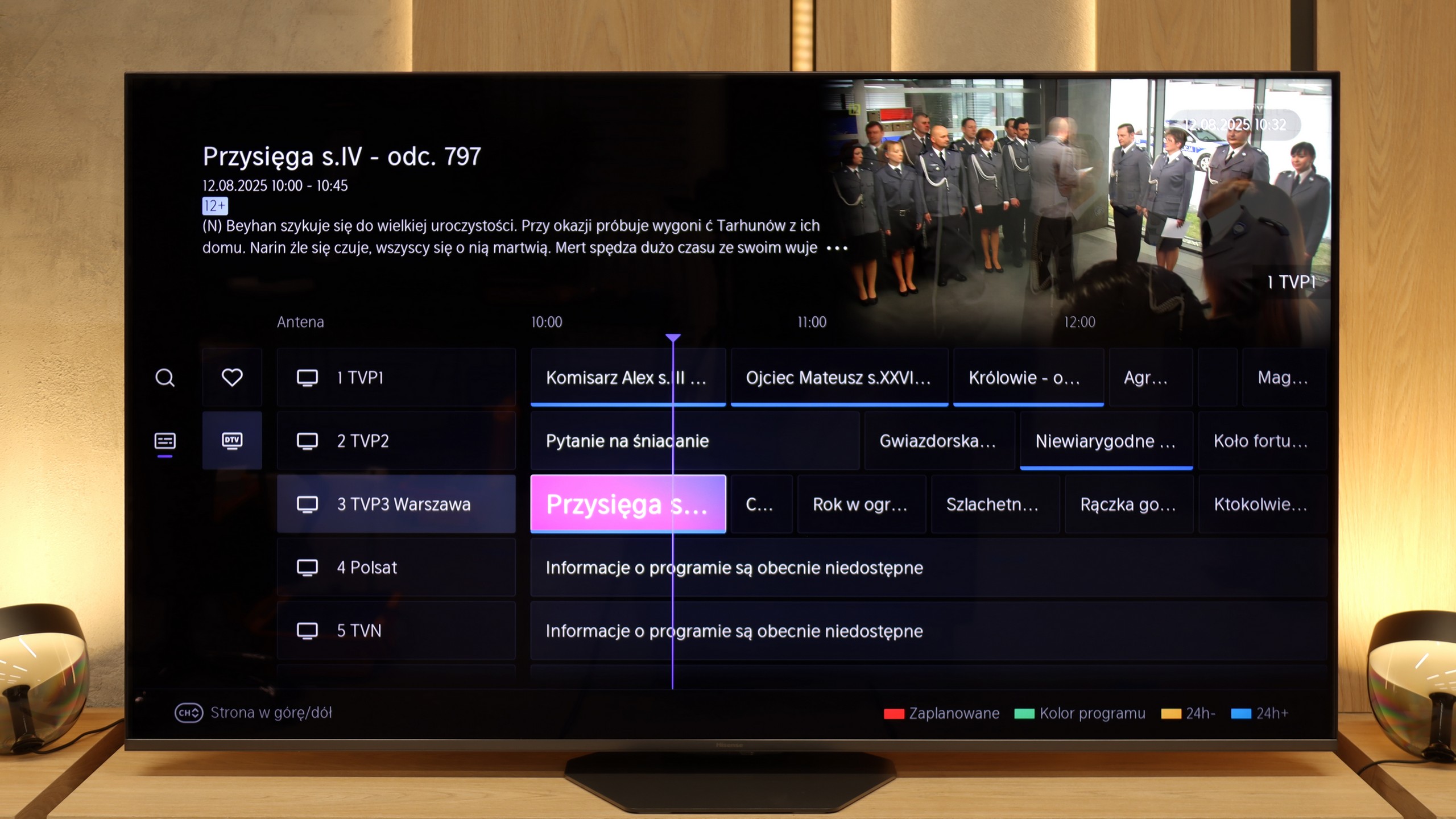
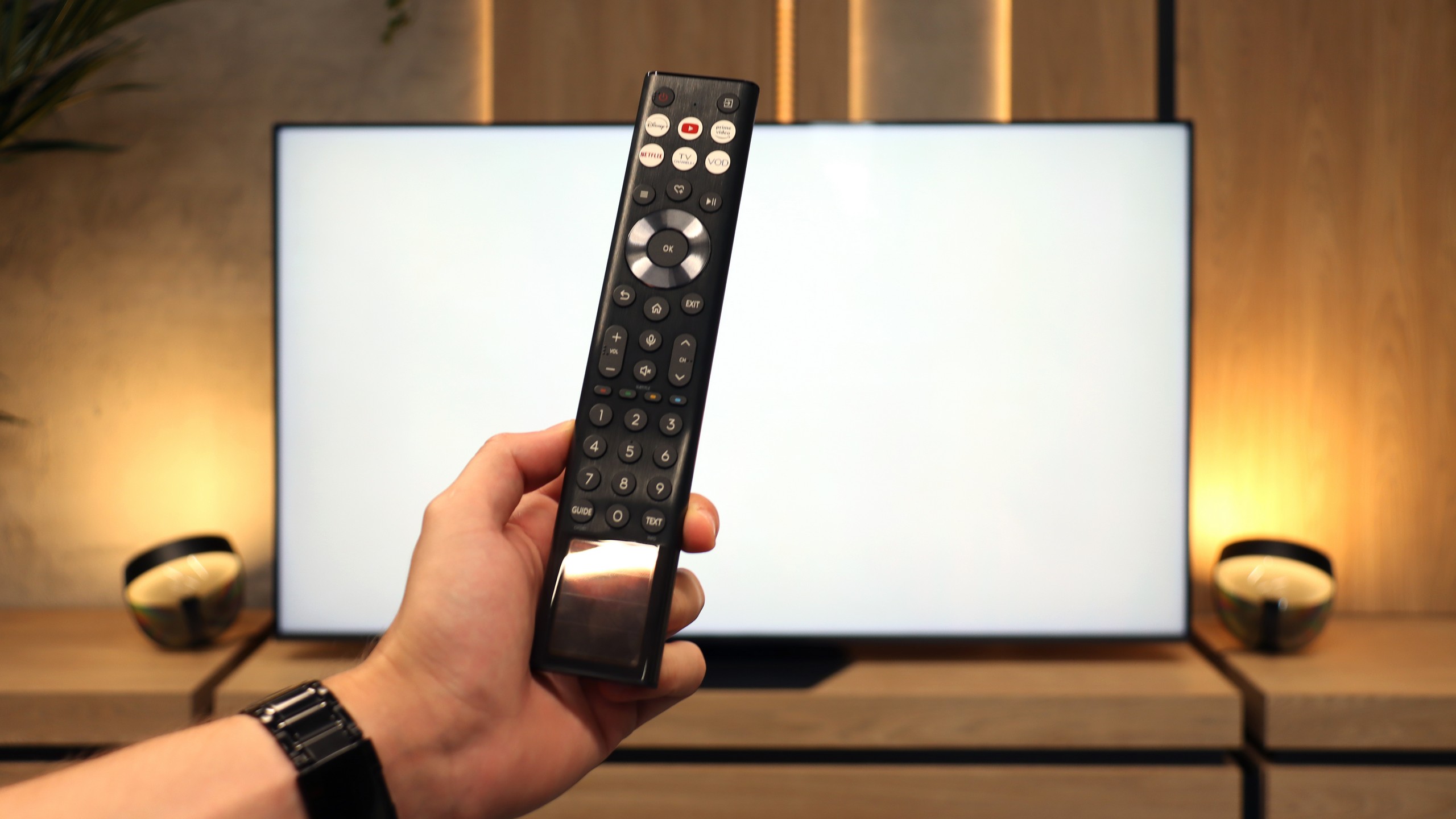
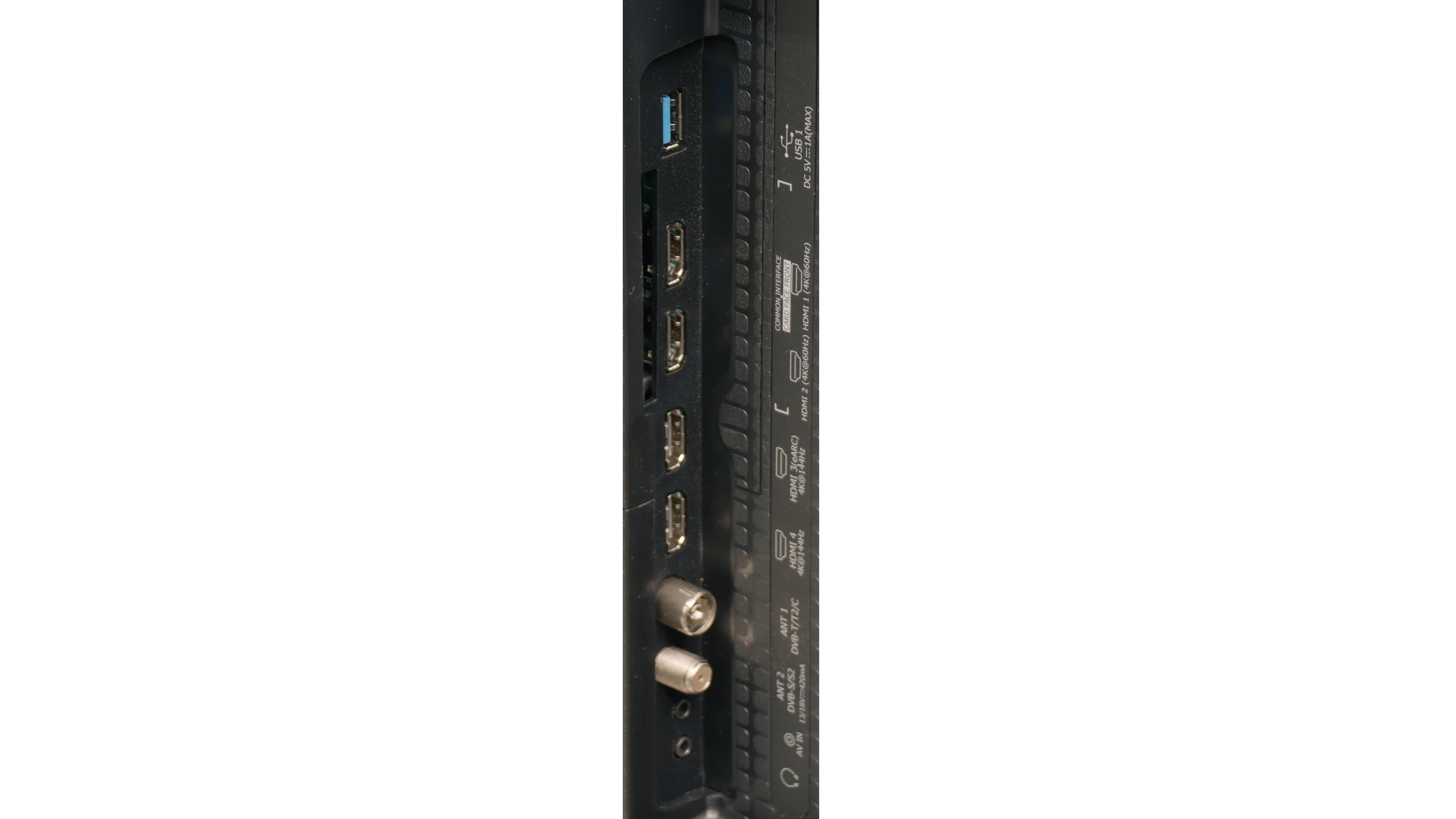
Classic Television Features
In terms of classic features, The Frame does not stand out particularly from the competition. There are no options for recording to USB or PiP (picture-in-picture) functionality, which may be disappointing for some users. On the other hand, the television allows for simultaneous use of speakers and headphones, which can be useful – especially for older users. The EPG, or electronic programme guide, is quite readable, and despite the lack of conventional buttons on the remote, we were able to access teletext. In everyday use, the basic functions operate smoothly and without significant complaints.
Smart System – Tizen and Applications
The Frame 2025 runs on the Tizen system, which has long been regarded as one of the most refined Smart TV solutions on the market. This system is designed with the idea that devices are more than just a television – and it has been constructed with that spirit in mind. Tizen offers full integration with external devices – supporting both Apple AirPlay and Miracast. With the SmartThings app, it is possible to control not only the television but also other devices within the smart home framework. Since last year, Samsung has also been developing its own voice assistant with support for the Polish language, which significantly facilitates operation. However, the greatest strength of the Smart system in The Frame remains the Art Gallery application. Although access to it is paid (in the form of a subscription), it offers the best scans of works of art available on the market – referring to scans, not ordinary photographs. As a result, the effect of a digital painting hanging on the wall is markedly better than in any other lifestyle television.
Classic Features
The Hisense U8Q runs on the VIDAA system, which can still be considered relatively new in the European market, but it must be admitted – the manufacturer has a lot to offer here. We find classic features that are still useful to many people: recording to USB, a clear EPG guide, and the ability to connect wired headphones, which will be especially appreciated by seniors. A nice addition is the presence of an audio jack – a connector that is slowly disappearing completely from televisions, yet here it has been retained.
USB-C in the Television!
A new feature in the U8Q is the USB-C port with DisplayPort support. This is an unconventional but very practical solution – thanks to it, you can connect a laptop or phone with one cable, even if these devices do not have an HDMI output.
Smart Features: VIDAA
When it comes to smart features, VIDAA works efficiently. The interface is fast, applications open without significant delays, and network functions – such as screen mirroring or AirPlay – work very well. Of course, there are minor shortcomings, but these are more details than real problems. The Achilles' heel remains the somewhat limited application library. However, it is worth remembering that the list of available programs can change from day to day – some disappear, while others appear, so the situation may improve.
Playing files from USB
9.1/10
8.3/10
Supported photo formats:
Maximum photo resolution:

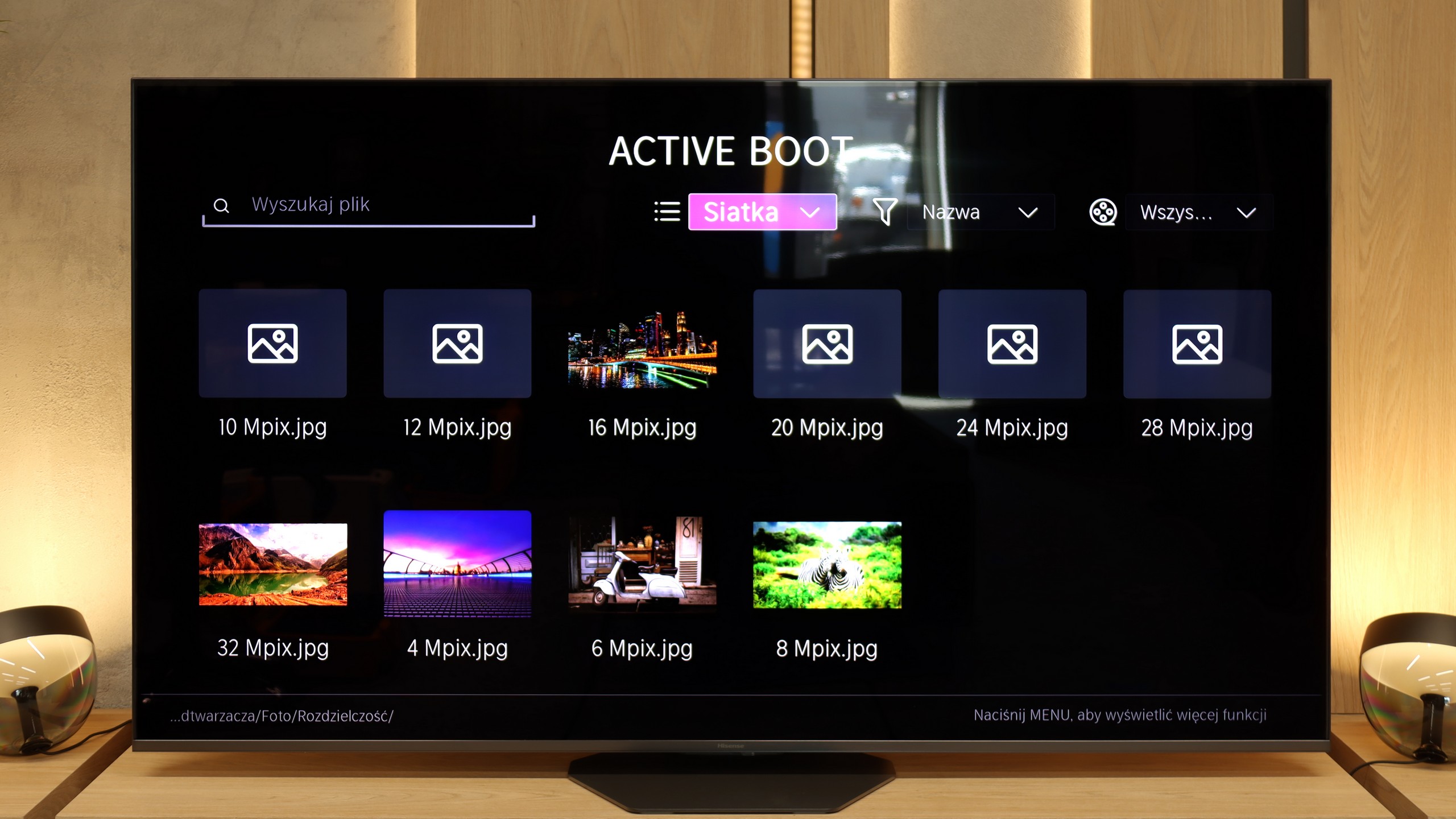
During testing, we did not notice any major issues with playing files from a USB memory stick. The television handled both video materials and photos well. Of course, there are some exceptions – for example, a lack of support for the HEIC format (used by Apple devices) – but it is difficult to consider this surprising. One positive aspect is the full support for high-resolution photos – the television displays files with a high number of megapixels without any problems, which may be particularly significant for those looking to treat The Frame as a digital frame as well. However, during testing, we noticed a limitation regarding subtitles – the television only correctly handled files in .txt format. It is worth keeping this in mind and ensuring that the downloaded subtitles for films are saved in this format; otherwise, they may simply not display.
The built-in media player in the Hisense U8Q will be more than sufficient for most people. The television opens popular video and audio formats and also handles photos. However, there is a small caveat – not all photo resolutions are supported. Therefore, if we have photographs saved in a very high number of megapixels, they may simply not open. It is worth keeping this in mind to avoid unpleasant surprises during the family photo presentation.
Apps
8.7/10
7.7/10














































Sound
6/10
7.8/10
- Maximum volume-88dB
- Dolby Digital Plus 7.1
- Dolby True HD 7.1
- Dolby Atmos in Dolby Digital Plus (JOC)
- Dolby Atmos in Dolby True HD
- DTS:X in DTS-HD MA
- DTS-HD Master Audio
For such a slim television, the sound is quite good. It is full, sufficient for everyday viewing, but without much excitement – typical for flat constructions. There is little bass, although at times it can be heard. The speakers in a 2.0.2 arrangement have a total power of 40 W (in the 55+ inch version). Unfortunately, the television does not support the DTS format, so for films with that sound, one has to rely on external equipment, such as a home cinema. A soundbar can be connected, and thanks to the Q-Symphony feature, the television plays along with it. Samsung also offers visually matched models for The Frame like S700D or S800D, but they are sold separately. (This shouldn’t surprise anyone😉).
The Hisense U8Q performs really well in terms of sound. The sound quality is pleasant, with a slight bass and quite decent mid-tones, making it entirely sufficient for everyday viewing of films, series, or gaming.
It gets a bit worse when we crank the volume up to 100%. This is rather a rare scenario, but it’s worth mentioning. With very strong bass, the rear speakers start to work so intensely that the television can slightly 'shudder', and the sound transitions into an unpleasant, plastic echo. Therefore, it’s best to stay within the range of 70–80% volume – at that level, the U8Q sounds clear and pleasant, without any unwanted effects.
Sound Quality Test
No sound test video
Acoustic Measurements
No acoustic data
88dBC (Max)
75dBC


